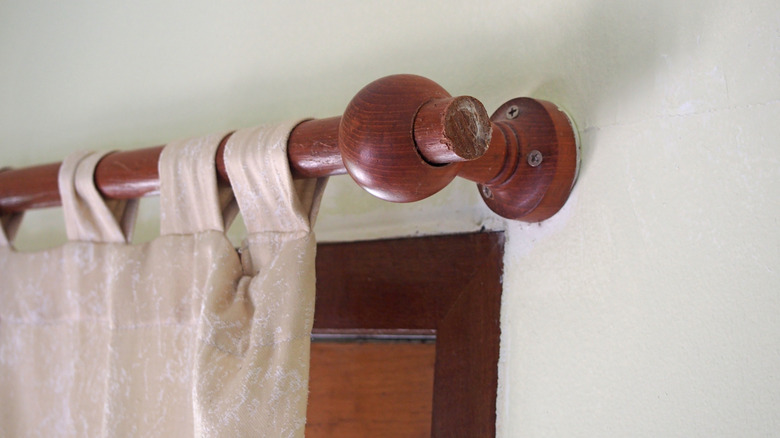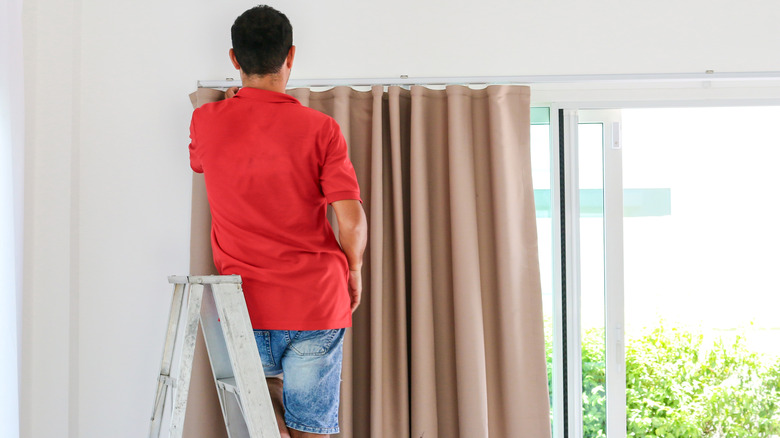The Durable Alternative To Wooden Curtain Rods (& How To Install It)
We may receive a commission on purchases made from links.
Wooden curtain rods are a classic pick. They're gorgeous and add that perfect rustic or cottage-style charm to a space — plus they bring warmth and a natural touch that's hard to beat. But let's be real: wooden curtain rods have their downsides. The biggest issue is moisture. If your space is prone to high humidity, wooden rods can warp, weaken, or even break over time. Not ideal, especially if water can get in through an open window or if you need to install your curtain in a kitchen or bathroom.
That's where metal curtain rods come in to save the day. They're super durable, strong enough to handle constant curtain movement, and, best of all, they're moisture-resistant. That means no worrying about warping or breaking, even in high-humidity areas. Whether you've got a steamy shower or an open window letting in humid air, metal rods can handle it.
And let's talk about affordability. Metal curtain rods tend to be cheaper than wooden ones, and the variety of finishes is a huge plus as well. For a vintage vibe, you can go for brass, like these Ivilon Drapery Window Curtain Rods. Or if you prefer something sleek and modern, chrome's got you covered. Sure, metal might not have the same cozy, homey feel as wood, but when it comes to durability and value, it's a smart, hassle-free choice.
How to install metal curtain rods
So, you've decided to go with a durable, long-lasting option and install metal curtain rods. Now, you're probably wondering how to get them up on the wall. The good news is that installing metal rods isn't all that different from other options.
Curtain rods are often sold as a set with the brackets and hardware you'll need to install them. Installing the curtain rod starts with attaching the hooks that will hold it in place. When deciding how high you'll hang your curtain, a general rule of thumb is to position the brackets about 6 inches above and on either side of the window. Of course, you can adapt based on the space you have available or the height of the ceiling. Grab a tape measure and a pencil to mark your spots before drilling to make sure the spots are even.
Next, you'll just need to drill the brackets into place. If you're installing a heavier rod or plan to hang weighty curtains, like blackout or thermal ones, it's a good idea to use wall anchor screws for extra stability and durability. Once your brackets are securely in place, simply slide the curtain rod through your curtains, set it onto the brackets, and you're all done!

